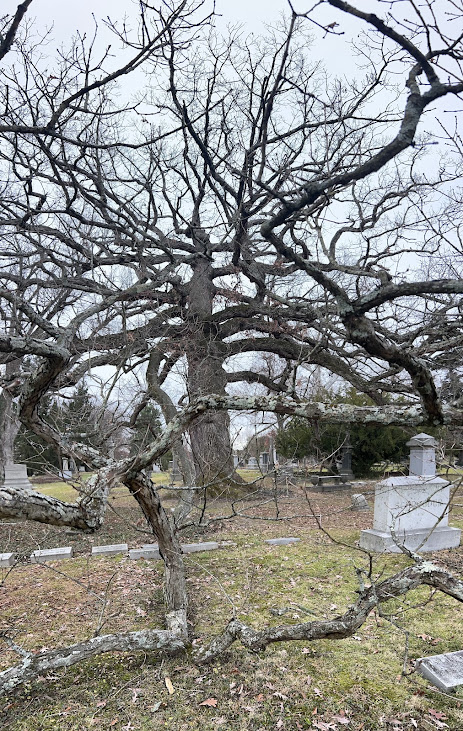
Regional Climate Summary – December 2023>>>












Mistletoe along Ohio River just north of Rabit Hash, KY.




Regional Climate Summary – December 2023>>>












Mistletoe along Ohio River just north of Rabit Hash, KY.



2024 Weather Summary Cheviot OH 3.4W
February 2024 Weather Summary. Very warm and very dry.
March 2024 Climate Summary. Very warm…again
April 2024. Very warm once again and very stormy
| Month | Month Total Rain and melted ppt | Annual Total Rain and melted ppt | 30 Yr Avg/ YTD Rain & melted ppt* | Departure Rain and melted ppt | Month Total Snow | Total Snow July-June | 30 Yr Avg Snow/ Avg Snow Season to date July-June* | Snow Season Departure July-June |
| Jan | 6.82 | 6.82 | 3.35/3.35 | +3.47 | 5.1 | 5.5 | 5.1/8.6 | -3.1 |
| Feb | 1.07 | 7.89 | 2.99/6.34 | +1.55 | 2.6 | 8.1 | 4.9/13.5 | -5.4 |
| Mar | 3.04 | 10.93 | 4.19/10.53 | +0.40 | T | 8.1 | 2.5/16.0 | -7.9 |
| April | 5.70 | 16.63 | 4.21/14.74 | +1.89 | T | 8.1 | 0.3/16.3 | -8.2 |
| May | 5.43/20.17 | 0.0/16.3 | ||||||
| June | 4.33/24.50 | 0.0/16.3 | ||||||
| July | 4.60/29.10 | 0.0/0.0 | ||||||
| Aug | 3.36/32.46 | 0.0/0.0 | ||||||
| Sept | 2.87/35.33 | 0.0/0.0 | ||||||
| Oct | 3.47/38.80 | 0.2/0.2 | ||||||
| Nov | 3.69/42.49 | 0.3/0.5 | ||||||
| Dec | 3.68/46.17 | 3.0/3.5 |
| Month | Mean Temp | Mean Max Temp | Mean Min Temp | 30 Year Avg Mean Temp | Departure | Accum Hours Below Freezing July- June | Grow Degree Days |
| Jan | 32.0 | 38.0 | 26.0 | 29.5 | +2.5 | 579 | 6.5 |
| Feb | 42.7 | 54.3 | 31.0 | 33.2 | +9.5 | 744 | 41 |
| Mar | 48.8 | 58.7 | 38.9 | 42.3 | +6.5 | 852 | 155 |
| April | 58.5 | 68.3 | 48.6 | 53.8 | +4.5 | 864 | 441 |
| May | 63.0 | ||||||
| June | 71.3 | ||||||
| July | 75.2 | ||||||
| Aug | 74.1 | ||||||
| Sept | 66.9 | ||||||
| Oct | 55.0 | ||||||
| Nov | 44.2 | ||||||
| Dec | 33.0 |
Total days in 2020 of 90 degrees Fahrenheit or higher:
First 90 degree day:
Latest 90 degree day:

.
Condition Monitoring Report
Station Number: OH-HM-24
Station Name: Cheviot 3.4 W
Report Date: 12/30/2023
Submitted: 12/30/2023 10:14 AM
Scale Bar: Moderately Dry
Description:
O.47 inch of rain in the past week, 1.72 inches in December, and 2.83 inches of rain since November 1. This is less than 50% of average rainfall in December and only 38% of average during that period. Regular light rainfall and lack of evaporation in winter has allowed surface moisture to improve but the deeper soil profile remains very dry and the water table is quite low.
Categories: General Awareness
Agriculture
Plants & Wildlife
Society & Public Health
Water Supply & Quality



This report is specifically for the Arbor Doctor’s location 3.4 miles west of Cheviot, OH, in the western suburbs of Cincinnati in southwest Ohio. This location is also an official cooperative observation site for the National Weather Service listed as Cheviot 3W.
What is the Condition Monitoring Report? See these links for more information:


.

.
.

.

.
Crop Condition and Soil Moisture Analytics Map:

.

.
Click on the title or the graphic (above) to access the
U.S. Weekly Drought MonitorPDF Version of Graphic
Click on the title or the graphic (above) to access the
U.S. Monthly Drought OutlookPDF Version of Graphic
Click on the title or the graphic (above) to access the
U.S. Seasonal Drought OutlookPDF Version of Graphic

Other Drought links:
Water once per week, one inch per week, under the entire branch spread, in the absence of rain, May through November. Either rainfall or your watering should equal the one inch per week. Do not water if the soil is already moist. Put out a sprinkler and a straight sided soup can or rain gauge and measure one inch per week. Measure the rainfall which falls in your yard. Your trees don’t care what fell at the airport!
If burlap was left on new trees, it will repel water and the tree or shrub may die. Be sure burlap and twine are removed from the top of all root balls. If your landscaper disagrees, refer him or her to the American National Standards Institute (ANSI) industry standard for installation of landscape plants.
To the extent possible recycle fallen leaves back into the soil around the trees and maintain mulch around the trees to a radius of at least 3-5 feet. Keep mulch off trunks. Use a coarse textured mulch. Avoid triple shredded mulch. Aged arborist wood chips ( https://getchipdrop.com/ ), mulched and composted leaves, pine bark, and pine straw are all good. Very finely ground mulches such as triple ground hardwood mulch are not beneficial and may inhibit moisture and oxygen exchange.

Metal Rectangular Spot Sprinkler
You may have noticed that Arbor Doctor, meteorologists and climatologists define seasons differently from “regular” or astronomical spring, summer, fall, and winter. So, why do meteorological and astronomical seasons begin and end at different times? Climatologically, the period July 14-21, the mid-point of meteorological summer, is the hottest week of the year and the period January 14-21, the mid-point of meteorological winter, is the coldest week of the year over much of the continental US including the Ohio valley.

–

Nearly half the country has had its coldest day by the first day of calendar winter. That is why meteorological winter makes the most sense.